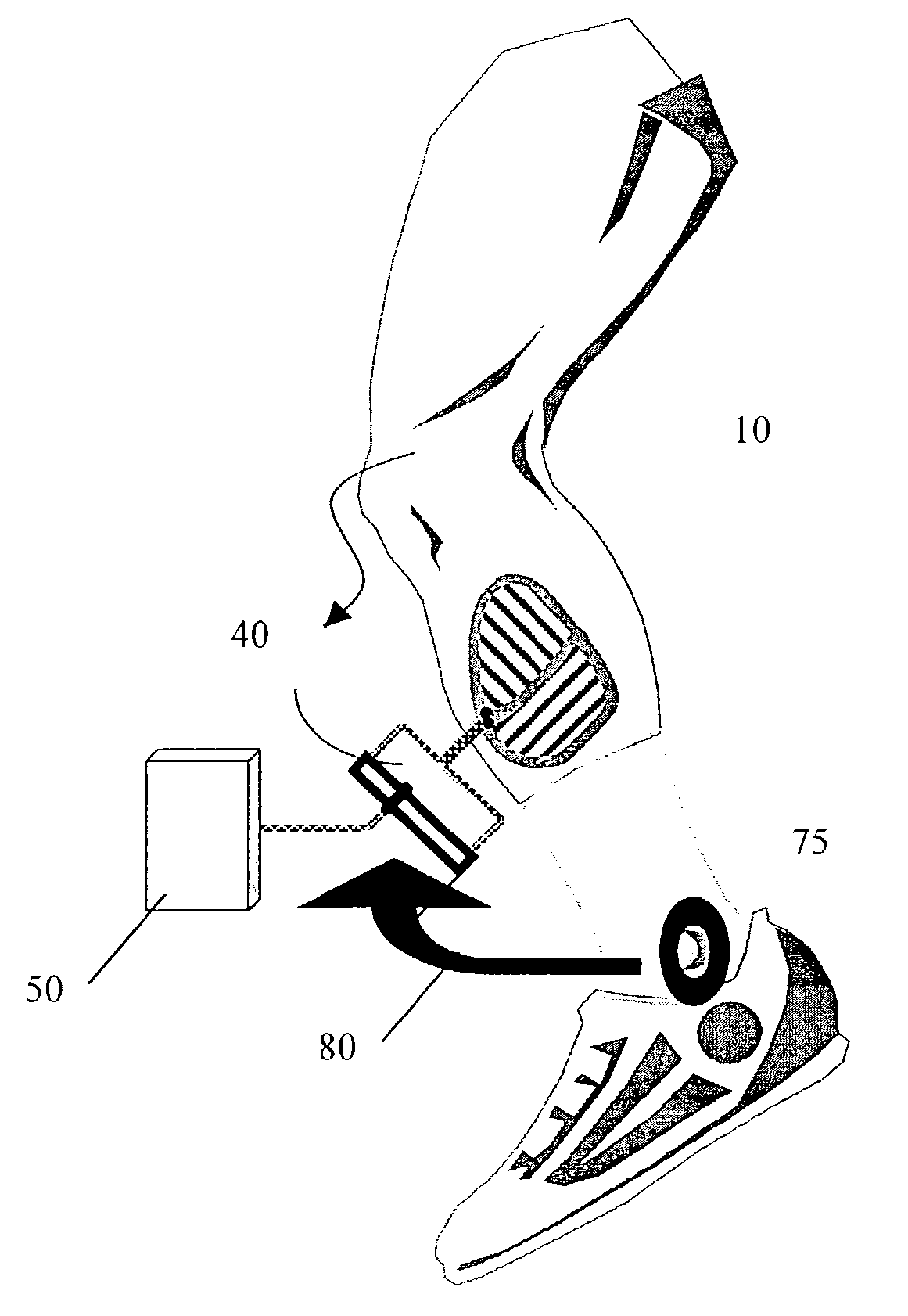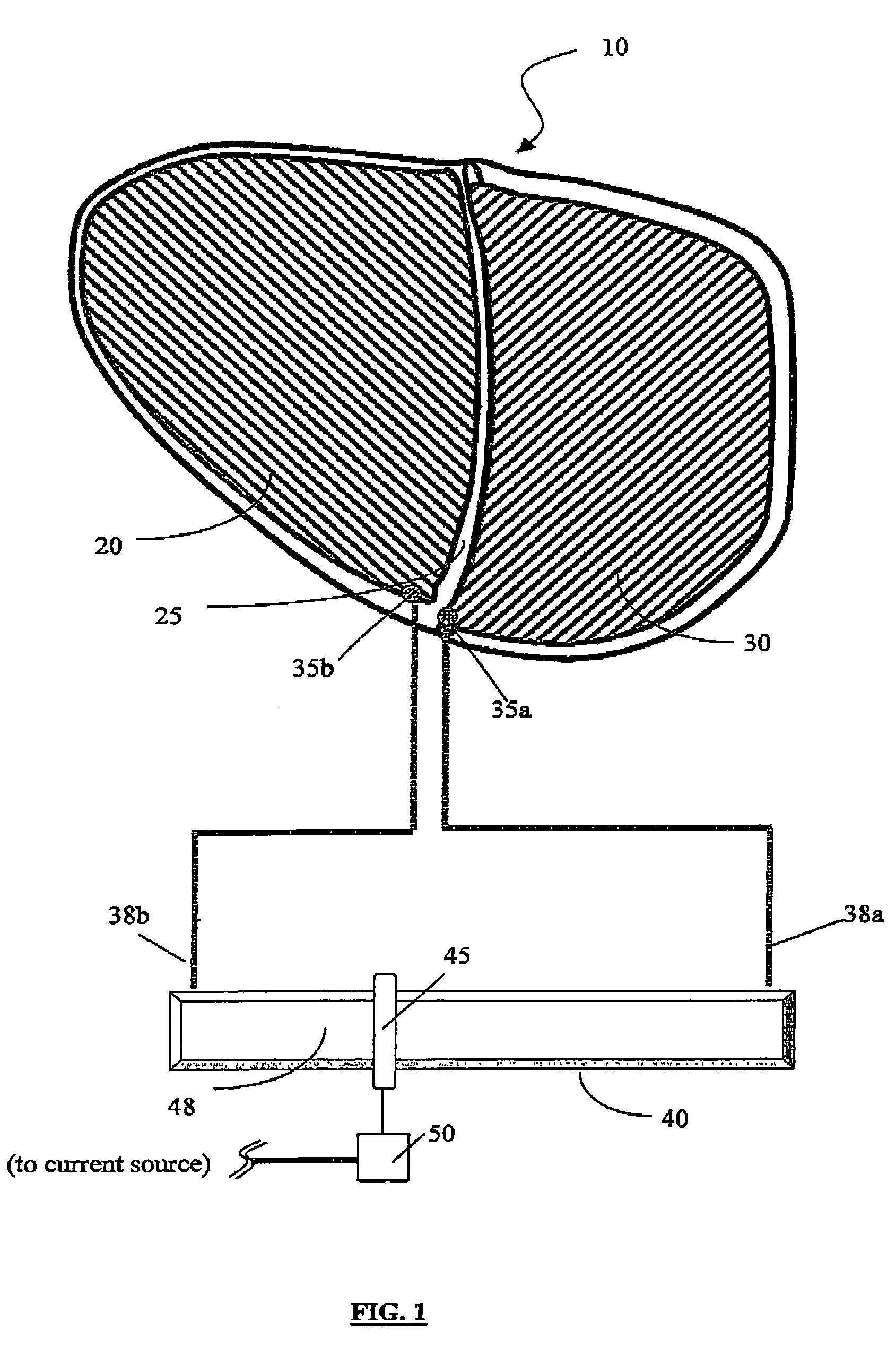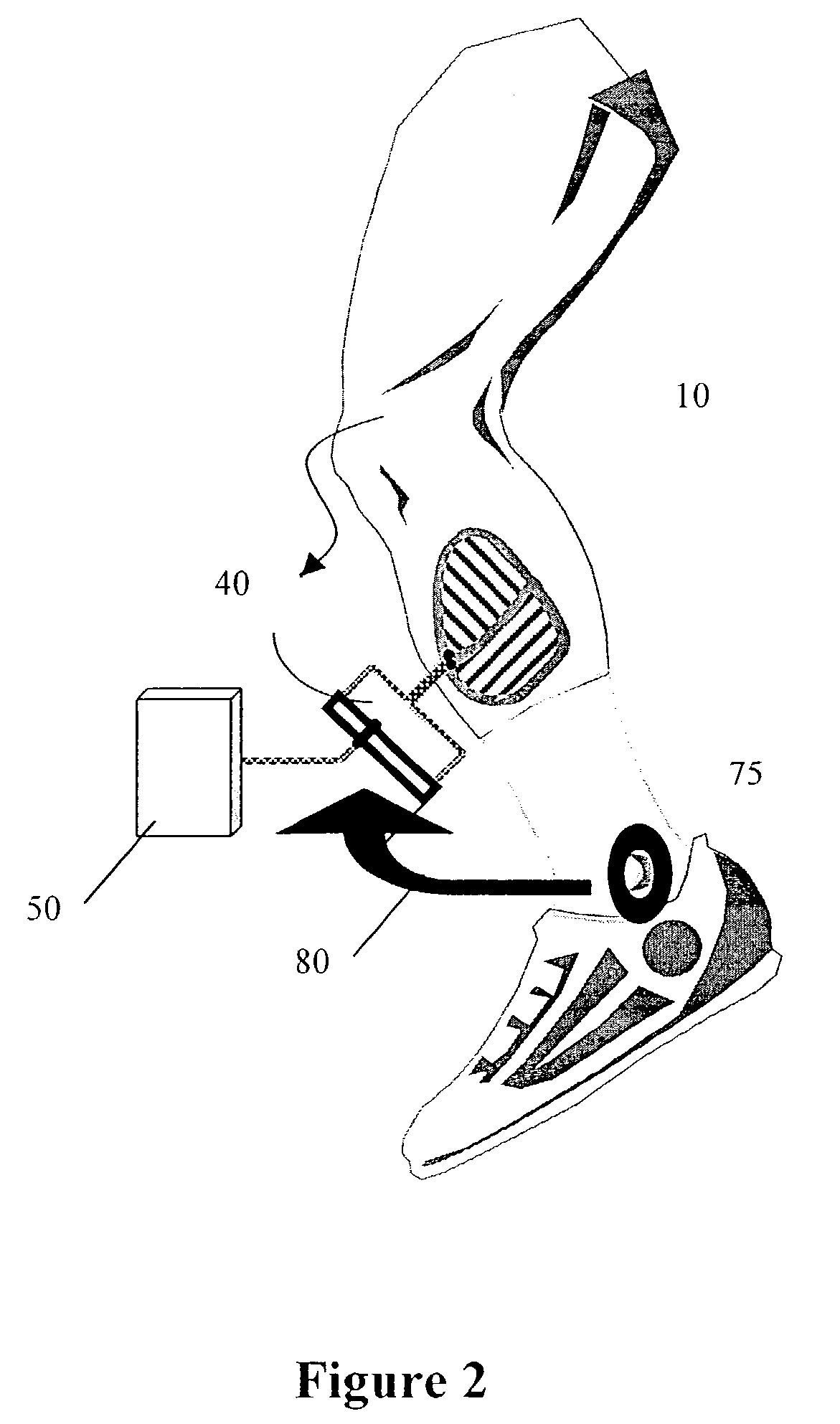Scanning electrode system for a neuroprosthesis
- Summary
- Abstract
- Description
- Claims
- Application Information
AI Technical Summary
Benefits of technology
Problems solved by technology
Method used
Image
Examples
Embodiment Construction
[0038]The present invention is a surface neuroprosthetic device that enables facile adjustment and fine-tuning of the local current density over the surface of a transcutaneous scanning electrode, so as to achieve optimal muscle response.
[0039]The transcutaneous surface electrode of the present invention allows for adjustment of the local current density, by the user, while the device is stimulating, hence giving the user direct feedback of the efficacy of the adjustment. This enables the user to set up the device on his limb, and carry out the fine adjustment of the electrode position by observing and feeling the limb response to the adjustment. Having achieved optimal response, the patient works with the device until he finishes his exercise, or until the electrode requires an additional readjustment.
[0040]The principles and operation of the system and method according to the present invention may be better understood with reference to the drawings and the accompanying description...
PUM
 Login to View More
Login to View More Abstract
Description
Claims
Application Information
 Login to View More
Login to View More - R&D
- Intellectual Property
- Life Sciences
- Materials
- Tech Scout
- Unparalleled Data Quality
- Higher Quality Content
- 60% Fewer Hallucinations
Browse by: Latest US Patents, China's latest patents, Technical Efficacy Thesaurus, Application Domain, Technology Topic, Popular Technical Reports.
© 2025 PatSnap. All rights reserved.Legal|Privacy policy|Modern Slavery Act Transparency Statement|Sitemap|About US| Contact US: help@patsnap.com



